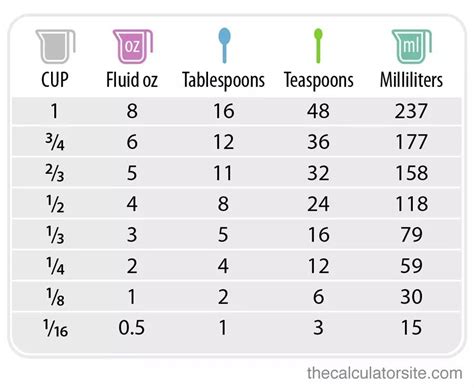How Many Cups In 14.5 Ounces
Kalali
Mar 28, 2025 · 4 min read

Table of Contents
How Many Cups Are in 14.5 Ounces? A Comprehensive Guide to Fluid Measurement Conversions
Understanding fluid measurements can be tricky, especially when dealing with conversions between ounces and cups. While a simple online search might give you a quick answer, understanding the why behind the conversion is crucial for accurate cooking, baking, and various other applications. This comprehensive guide will not only tell you how many cups are in 14.5 ounces but also equip you with the knowledge to handle similar conversions with ease.
Understanding the Units: Ounces and Cups
Before diving into the conversion, let's establish a clear understanding of the units involved:
-
Ounces (oz): A unit of fluid volume, commonly used in the United States and other countries. It's important to differentiate between fluid ounces (fl oz) and avoirdupois ounces (oz), which measure weight. In this context, we are exclusively dealing with fluid ounces.
-
Cups (c): Another unit of fluid volume, primarily used in cooking and baking recipes. The standard cup measurement is 8 fluid ounces.
The Conversion: 14.5 Ounces to Cups
The fundamental conversion factor is that 1 cup equals 8 fluid ounces. Therefore, to convert 14.5 ounces to cups, we perform a simple division:
14.5 fl oz / 8 fl oz/cup = 1.8125 cups
Therefore, there are approximately 1.81 cups in 14.5 ounces.
Rounding and Practical Applications
In most cooking and baking scenarios, you'll likely round this number to the nearest practical measurement. Rounding 1.8125 cups gives us:
- Rounded Down: 1 ¾ cups (1.75 cups) This is a common approach for less precise measurements.
- Rounded Up: 1 ¾ cups (1.75 cups) or 2 cups This would depend on the recipe's requirements; for instance, if the recipe calls for a significant amount of liquid and a little extra won't hurt, you can round up.
- Using Fractions for Precision: Some recipes benefit from greater precision. In this case, you can use the exact value of 1.8125 cups, or convert it to a more manageable fraction like 1 13/16 cups.
Beyond the Basics: Mastering Fluid Measurement Conversions
Understanding the 14.5-ounce to cup conversion is only one aspect of mastering fluid measurements. Let's explore additional strategies and scenarios:
1. Converting Other Ounce Amounts to Cups:
The same basic principle applies to converting other ounce amounts to cups. Simply divide the number of fluid ounces by 8. For example:
- 12 ounces: 12 fl oz / 8 fl oz/cup = 1.5 cups (or 1 ½ cups)
- 24 ounces: 24 fl oz / 8 fl oz/cup = 3 cups
- 3.5 ounces: 3.5 fl oz / 8 fl oz/cup = 0.4375 cups (approximately ½ cup)
2. Converting Cups to Ounces:
To perform the reverse conversion (cups to ounces), multiply the number of cups by 8. For example:
- 2 cups: 2 cups * 8 fl oz/cup = 16 fl oz
- 2.5 cups: 2.5 cups * 8 fl oz/cup = 20 fl oz
- ¾ cup: 0.75 cups * 8 fl oz/cup = 6 fl oz
3. Dealing with Different Cup Sizes:
While the standard US cup is 8 fluid ounces, variations exist. Some recipes might use metric cups, which can differ slightly. Always check the recipe's instructions or the measuring cup's markings to ensure accuracy.
4. Utilizing Online Conversion Tools:
Several online conversion tools can simplify the process. These tools often handle multiple units and provide quick and accurate conversions. However, understanding the underlying principles remains essential for avoiding errors and building confidence in your measurement skills.
5. The Importance of Accurate Measurement in Cooking and Baking:
Precise measurement is paramount, particularly in baking. Even minor deviations from the recipe's specified amounts can significantly affect the final product's texture, taste, and overall consistency. Accurate measurement, using both the appropriate tools and understanding the conversion process, helps create consistent and delicious results.
6. Advanced Conversion Scenarios:
Beyond simple ounce-to-cup conversions, you might encounter scenarios involving other units such as pints, quarts, and gallons. Understanding the relationships between these units is helpful for more complex culinary projects and fluid management in other contexts. Remember that:
- 1 pint (pt) = 2 cups = 16 fluid ounces
- 1 quart (qt) = 2 pints = 4 cups = 32 fluid ounces
- 1 gallon (gal) = 4 quarts = 8 pints = 16 cups = 128 fluid ounces
7. Tips for Accurate Measurement:
- Use the Right Tools: Invest in a good set of measuring cups and spoons.
- Level Off Ingredients: Avoid overfilling your measuring cups, especially for dry ingredients.
- Read the Recipe Carefully: Pay close attention to unit specifications.
- Practice Makes Perfect: The more you work with conversions, the more comfortable and accurate you'll become.
Conclusion: Mastering Fluid Measurements for Culinary Success
Knowing how many cups are in 14.5 ounces is just the beginning. Mastering fluid measurement conversions empowers you to confidently tackle any recipe, ensuring delicious and consistent results. By understanding the basic conversion principles and employing the techniques outlined in this guide, you can enhance your culinary skills and confidently navigate the world of fluid measurements. Remember that accuracy is key, especially in baking, and that understanding the ‘why’ behind the conversion is as important as knowing the ‘how.’ Happy cooking!
Latest Posts
Latest Posts
-
How Many Ounces Are In 8 Lb
Mar 31, 2025
-
Which Group Has The Highest Electronegativity
Mar 31, 2025
-
Cuanto Es 15 Pies En Centimetros
Mar 31, 2025
-
Lowest Common Multiple Of 14 And 6
Mar 31, 2025
-
9 Out Of 24 As A Percentage
Mar 31, 2025
Related Post
Thank you for visiting our website which covers about How Many Cups In 14.5 Ounces . We hope the information provided has been useful to you. Feel free to contact us if you have any questions or need further assistance. See you next time and don't miss to bookmark.
